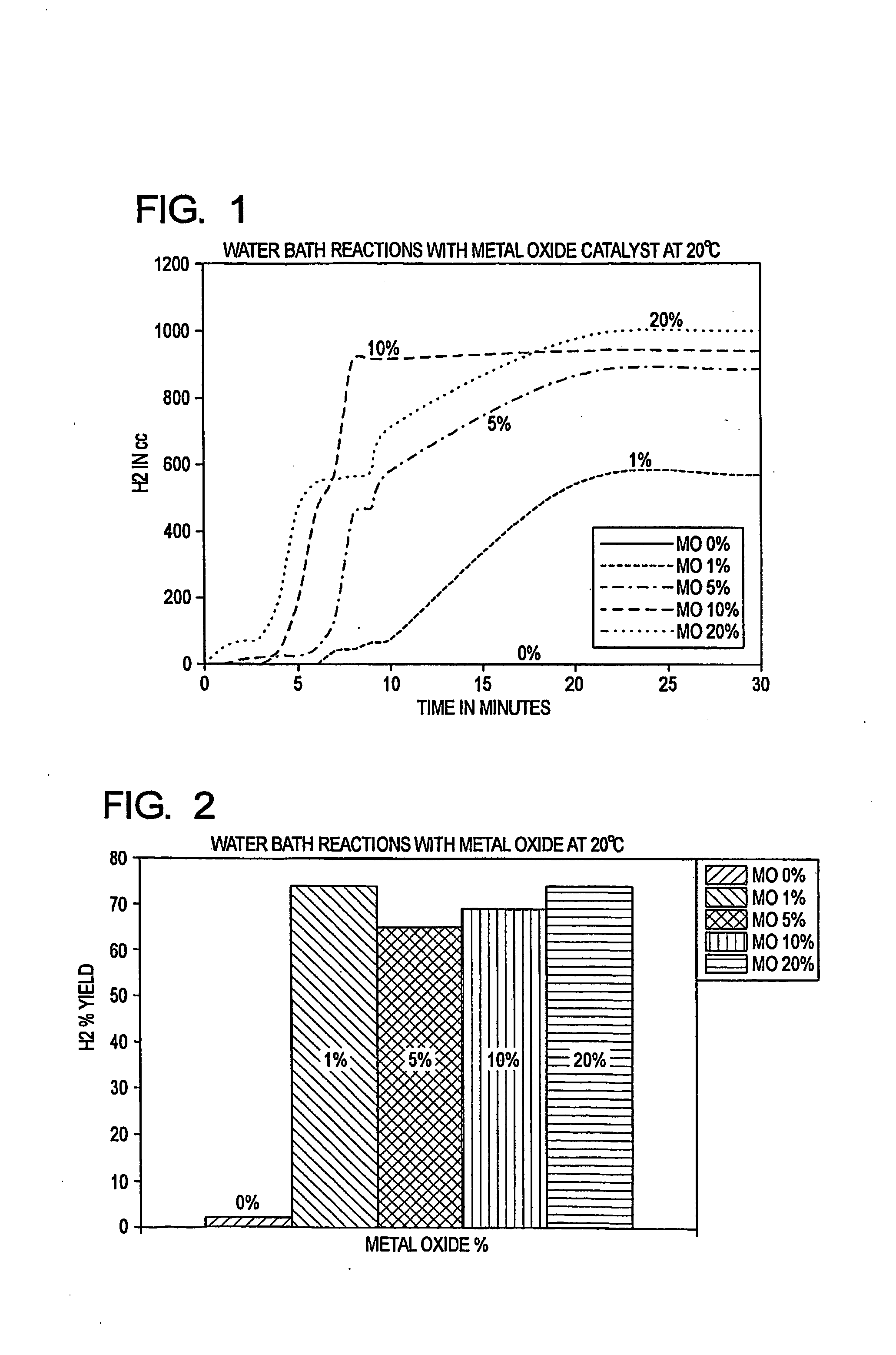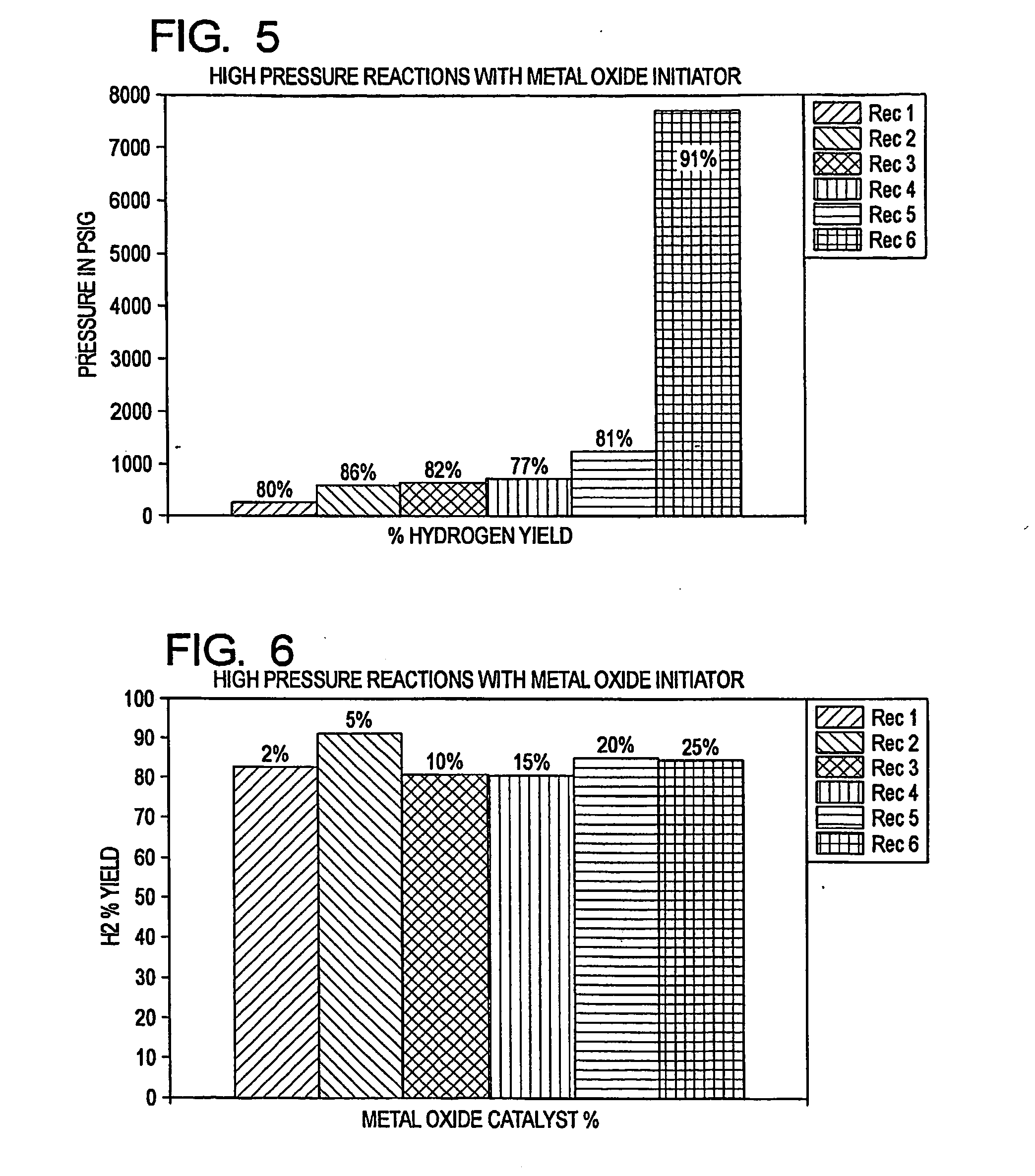Method and Composition for Production of Hydrogen
a technology of hydrogen and hydrogen gas, applied in the field of hydrogen production, can solve the problems of increasing the use of hydrogen as fuel, serious inefficiencies, and increasing the cost of hydrocarbons, and achieve the effects of increasing the cost of production, and increasing the cost of hydrogen production
- Summary
- Abstract
- Description
- Claims
- Application Information
AI Technical Summary
Benefits of technology
Problems solved by technology
Method used
Image
Examples
Embodiment Construction
[0029]a. Overview
[0030]The present invention reacts a mixture of metallic aluminum and a metal oxide initiator with water, in conjunction with a water soluble salt catalyst, to generate hydrogen at ambient temperatures and pressures, and at neutral or near neutral pH levels. The reactants are therefore able to achieve a rapid and efficient water split reaction using (for example) ordinary tap water, without requiring preheating. Furthermore, complex regulation of the reactants is not needed. The reaction is also highly productive when conducted at elevated temperatures and pressures.
[0031]The metallic aluminum, initiator and catalyst are preferably in particulate form (e.g., pulverized) and are mixed to achieve a substantially uniform distribution. The initiator is suitably an alkaline earth metal oxide, such as calcium oxide (CaO). The catalyst is suitably an alkali salt, such as sodium chloride (NaCl) or potassium chloride (KCl). The particle size is preferably in the range from a...
PUM
| Property | Measurement | Unit |
|---|---|---|
| pressure | aaaaa | aaaaa |
| temperature | aaaaa | aaaaa |
| pressures | aaaaa | aaaaa |
Abstract
Description
Claims
Application Information
 Login to View More
Login to View More - R&D
- Intellectual Property
- Life Sciences
- Materials
- Tech Scout
- Unparalleled Data Quality
- Higher Quality Content
- 60% Fewer Hallucinations
Browse by: Latest US Patents, China's latest patents, Technical Efficacy Thesaurus, Application Domain, Technology Topic, Popular Technical Reports.
© 2025 PatSnap. All rights reserved.Legal|Privacy policy|Modern Slavery Act Transparency Statement|Sitemap|About US| Contact US: help@patsnap.com



